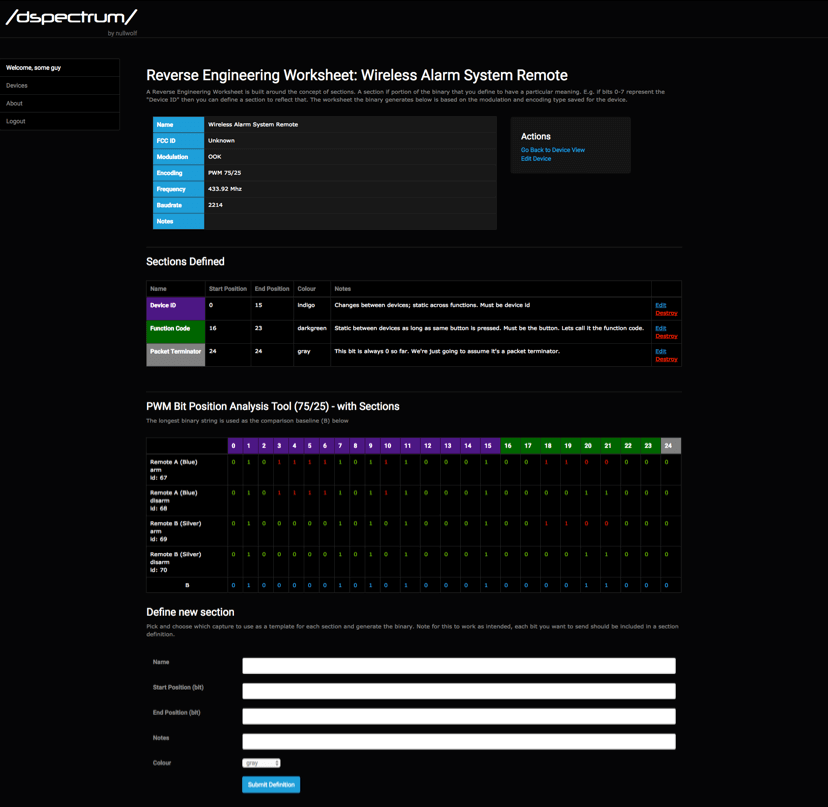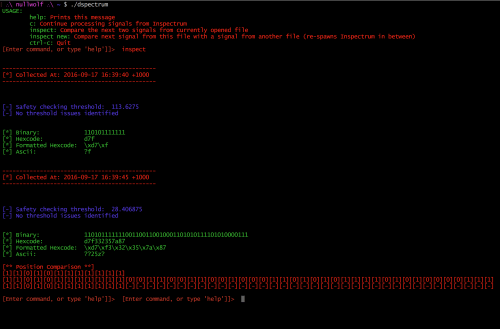YouTube Talk: Introduction to DSpectrum for Reverse Engineering Signals
Over on YouTube a talk from the author of DSpectrum has been uploaded from his talk during the 13th Cyberspectrum Melbourne meetup. In his talk he goes through the full process of reverse engineering a wireless alarm system in DSpectrumGUI. DSpectrum is a reverse engineering tool that aims to make it trivial to demodulate digital RF transmissions using data captured from SDRs like an RTL-SDR or HackRF.
In the video he shows how to create a project, import a capture and create an overlay on Inspectrum and bring the waveform back into DSpectrum. DSpectrum was then able to automatically detect that the encoding used was PWM and convert it into a bit string. Then by importing multiple captures from various buttons on the alarm he shows how easy it is to see the differences in the bit strings from within DSpectrum. From these differences he uses DSpectrum to help identify what the function of each byte of the bitstring is. Finally he shows how to perform a replay attack with RFcat or similar hardware using the data gathered.
This is a really good talk to watch if you’re interested in getting started with reverse engineering simple digital signals, like those from ISM band devices.


